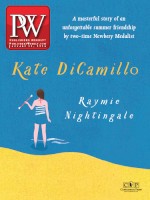“The way people buy books today is completely different from how they bought them five or 10 years ago,” Martin Lindstrom says. He is an expert on branding and the psychology of consumers, and he’s the author of seven books, including Small Data: The Tiny Clues That Uncover Huge Trends (St. Martin’s, Feb.). For his keynote, Lindstrom will show booksellers how to maximize their strengths by paying attention to seemingly insignificant social cues relating to their customers’ lifestyles and behaviors.
Although Lindstrom’s talk takes its name from his forthcoming book, it could easily be titled “Bookstore on Main Street Makeover.” He will take a page from his ongoing Today show gig, “Main Street Makeover,” in which he and his team turn around a business in 24 hours. Booksellers from five stores around the country who asked for his help will join him on stage to receive his “very targeted” recommendations based on his observations of consumer behavior in 77 countries over the past 25 years.
Indie bookstores “cannot compete on price or on volume,” Lindstrom says. “[They] have to compete on experience and on insight.” Smaller booksellers succeed by “selling their passion” to customers, who are “buying the passion as much as the books.”
Though most consumers who buy and read books are women, according to Lindstrom’s research, the way they shop has changed. In years past, teenage girls would visit bookstores with parents or friends; now they visit in groups of four to six and stay together as they browse. “It’s a group book-buying experience,” Lindstrom says. But one girl inevitably ends up as the leader of each pack, and she “literally is controlling the other girls” when it comes to what books are purchased—if any are.
And, Lindstrom says, young women prefer a more tactile shopping experience. “This generation is craving sensory input,” he says. “They want to touch much more.” If a teenage girl picks up a book in a bookstore, she is 30% more likely to purchase it than someone her age was 10 years ago, he says. With 41% of book sales based on sight and 31% on touch, booksellers should do everything they can to make the purchase of books “a sensual experience.”
Lindstrom, however, is one of the 23% of book lovers who shop with their noses. He has been shopping in bookstores since his childhood in Denmark. “The smell of books for me is almost like the feeling you are going into the bedroom or the office of the author and feeling [he or she] was there,” he says.
See Lindstrom’s breakfast keynote on Sunday, January 24, 7:45–9:15 a.m., Plaza Ballroom A, B, C.



 Volume 263
Issue 02
01/11/2016
Volume 263
Issue 02
01/11/2016





